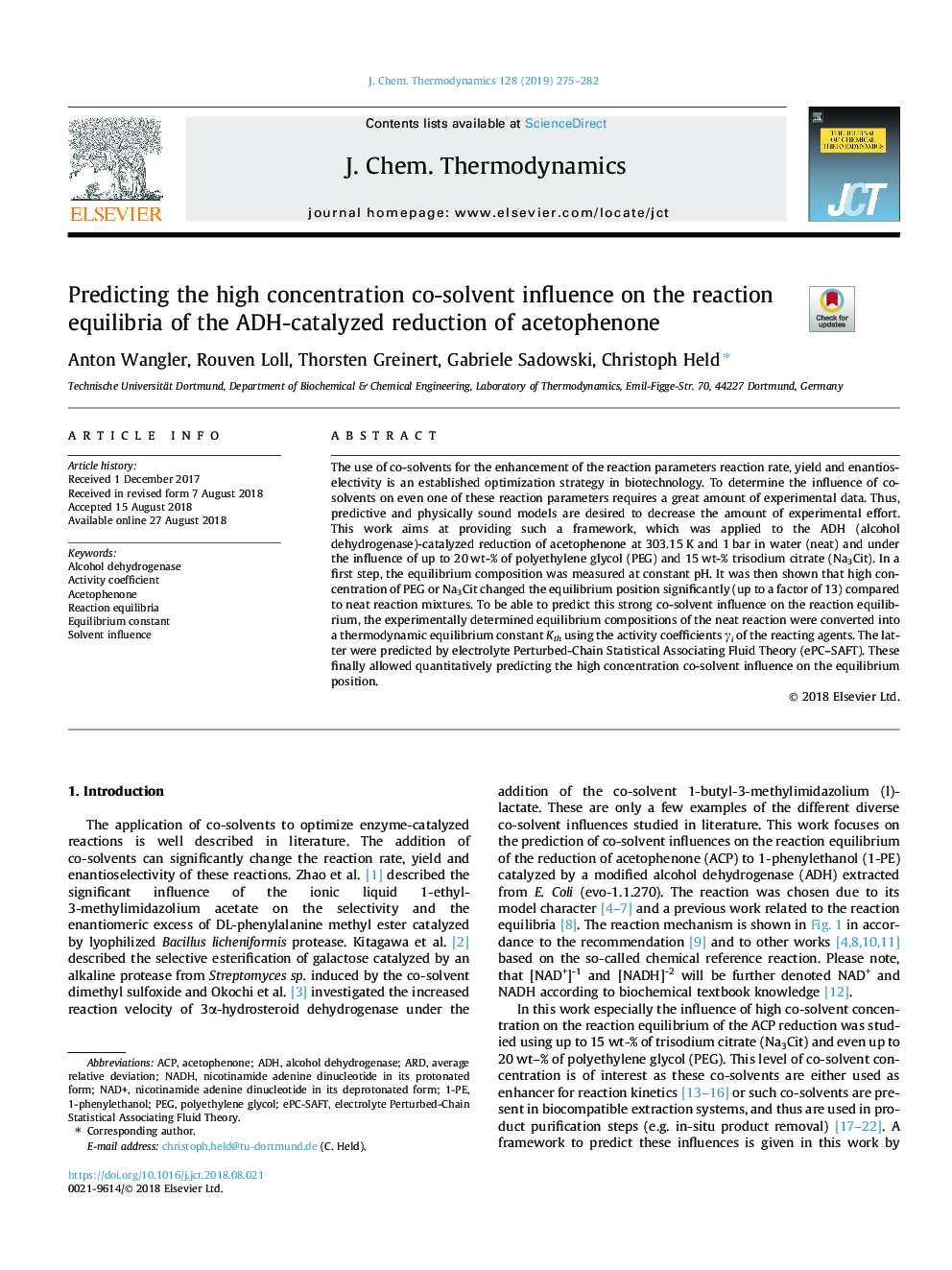| Article ID | Journal | Published Year | Pages | File Type |
|---|---|---|---|---|
| 11000666 | The Journal of Chemical Thermodynamics | 2019 | 8 Pages |
Abstract
The use of co-solvents for the enhancement of the reaction parameters reaction rate, yield and enantioselectivity is an established optimization strategy in biotechnology. To determine the influence of co-solvents on even one of these reaction parameters requires a great amount of experimental data. Thus, predictive and physically sound models are desired to decrease the amount of experimental effort. This work aims at providing such a framework, which was applied to the ADH (alcohol dehydrogenase)-catalyzed reduction of acetophenone at 303.15â¯K and 1â¯bar in water (neat) and under the influence of up to 20â¯wt-% of polyethylene glycol (PEG) and 15â¯wt-% trisodium citrate (Na3Cit). In a first step, the equilibrium composition was measured at constant pH. It was then shown that high concentration of PEG or Na3Cit changed the equilibrium position significantly (up to a factor of 13) compared to neat reaction mixtures. To be able to predict this strong co-solvent influence on the reaction equilibrium, the experimentally determined equilibrium compositions of the neat reaction were converted into a thermodynamic equilibrium constant Kth using the activity coefficients γi of the reacting agents. The latter were predicted by electrolyte Perturbed-Chain Statistical Associating Fluid Theory (ePC-SAFT). These finally allowed quantitatively predicting the high concentration co-solvent influence on the equilibrium position.
Keywords
Related Topics
Physical Sciences and Engineering
Chemical Engineering
Chemical Engineering (General)
Authors
Anton Wangler, Rouven Loll, Thorsten Greinert, Gabriele Sadowski, Christoph Held,
